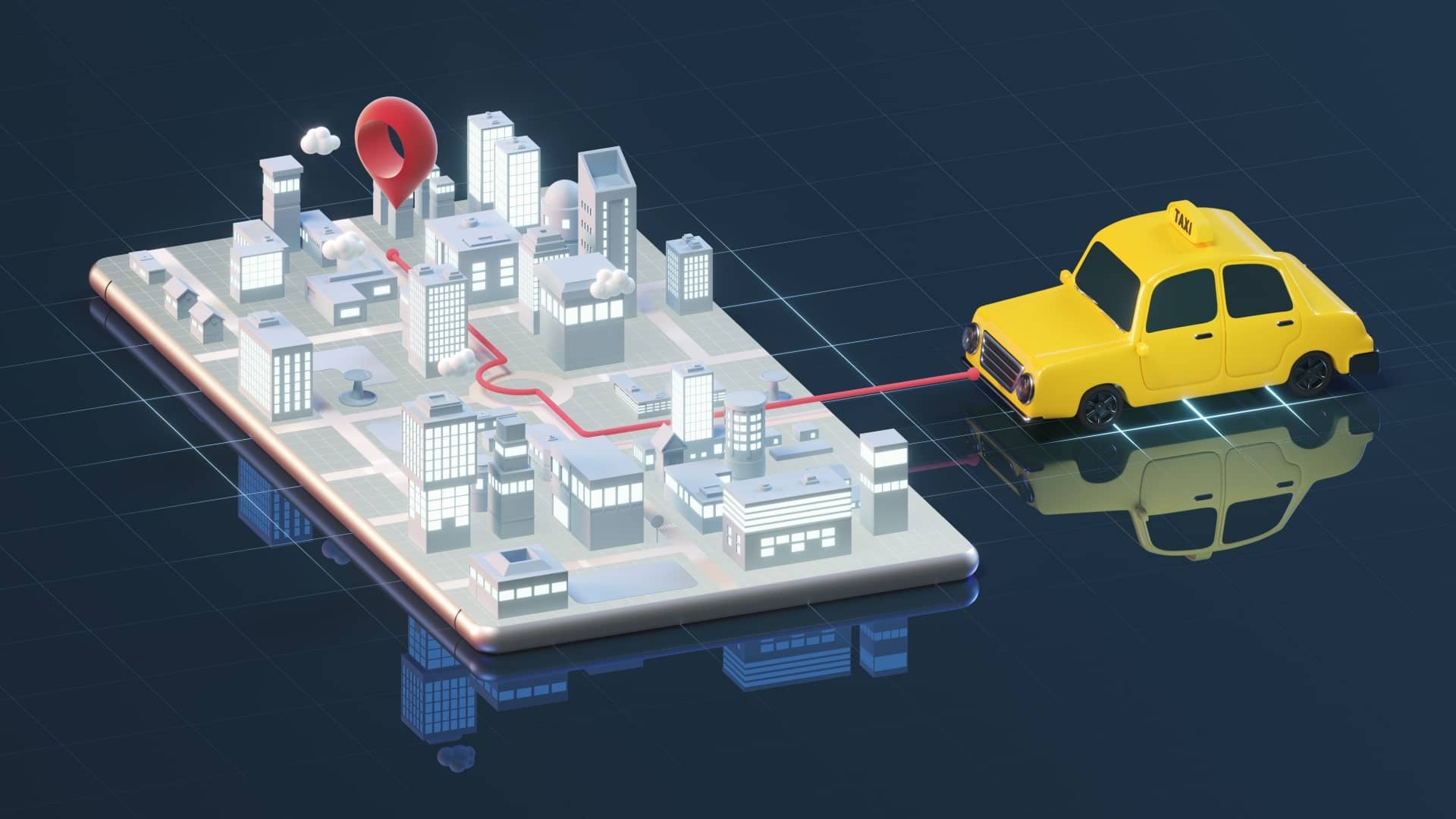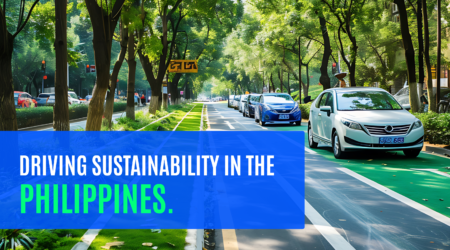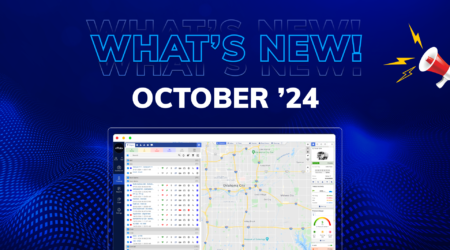Why Is Fleet Route Optimization Important?
Fleet route optimisation is a critical process for businesses that rely on transportation and logistics. This method helps in planning the most efficient routes for vehicles in a fleet, ensuring that deliveries are timely and costs are minimized. In today’s fast-paced world, where customer satisfaction and operational efficiency are paramount, understanding the importance of fleet route optimisation can make a significant difference. In this blog, we will delve into various aspects of fleet route optimization and explain why it is essential for modern businesses.
Introduction to Fleet Route Optimisation
Fleet route optimisation is the process by which the most efficient routes are determined, for the fleet of vehicles. It involves using advanced algorithms and software to calculate the best possible routes based on various factors such as distance, traffic conditions, delivery windows, and fuel consumption. This process not only helps in reducing operational costs but also enhances the overall efficiency of the fleet. Fleet route optimization is necessary to ensure timely deliveries, reduce fuel consumption, and minimize operational expenses, thus enhancing overall business efficiency.
Key Benefits of Fleet Route Optimisation
- Cost Reduction: One of the primary benefits of fleet route optimization is the reduction in fuel and maintenance costs. By planning the most efficient routes, companies can save a significant amount of money on fuel and vehicle wear and tear.
- Improved Customer Satisfaction: Timely deliveries are important for customer satisfaction. Optimizing routes ensures that deliveries are made on time, leading to happier customers and better business relationships.
- Increased Productivity: Efficient route planning allows drivers to complete more deliveries in less time. This increase in productivity can lead to higher revenues and improved profitability.
- Environmental Benefits: Optimised routes result in lower fuel consumption, which in turn reduces the carbon footprint of the fleet. This is not only beneficial for the environment but also enhances the company’s image as a responsible business.
How Fleet Route Optimization Works
Fleet route optimisation involves several steps and requires sophisticated software to achieve the best results. Here is a breakdown of how the process works:
- Data Collection: The first step is collecting data related to the fleet and its operations. This includes information about vehicles, drivers, delivery locations, and traffic conditions.
- Route Planning: Based on the collected data, the software uses algorithms to calculate the most efficient routes. It takes into account factors such as distance, traffic, delivery windows, and vehicle capacities.
- Route Monitoring: Once the routes are planned, the software continuously monitors the fleet to ensure that the drivers are following the planned routes. It also provides real-time updates in case of any changes in traffic conditions or delivery schedules.
- Analysis and Improvement: After the routes are executed, the software analyzes the performance and provides insights for further improvement. This continuous feedback loop helps in refining the optimization process and achieving better results over time.
Importance of Real-Time Data in Fleet Route Optimization
Real-time data plays a crucial role in fleet route optimisation. By using real-time traffic updates and GPS tracking, the software can dynamically adjust the routes based on current conditions. This ensures that the fleet can avoid traffic jams and other delays, leading to more efficient operations.
Challenges in Fleet Route Optimization
Despite the numerous benefits, fleet route optimisation comes with its own set of challenges. Some of the common challenges include:
- Data Accuracy: The accuracy of the optimisation process depends heavily on the quality of the data. Inaccurate or incomplete data can lead to suboptimal routes and increased costs.
- Complex Algorithms: The algorithms used for route optimisation are complex and require significant computational power. This can be a challenge for companies with limited IT resources.
- Dynamic Conditions: Traffic conditions and delivery requirements can change rapidly. Keeping up with these dynamic conditions requires real-time monitoring and quick decision-making.
- Integration with Existing Systems: Integrating the route optimisation software with existing fleet management systems can be a challenge. It requires seamless integration to ensure that all aspects of the fleet operations are working together efficiently.
Solutions to Overcome Challenges
To overcome these challenges, businesses can adopt several strategies which are mentioned below:
- Invest in Quality Software: Investing in high-quality route optimisation software, which can help in addressing many of these challenges. The software provides accurate data, real-time updates, and seamless integration with existing systems.
- Regular Data Updates: Ensuring that the data used for route planning is regularly updated can help in improving the accuracy of the optimisation process. This includes updating traffic information, delivery schedules, and vehicle details.
- Training for Drivers and Staff: Providing training for drivers and staff on how to use the route optimisation software can help in ensuring that the system is used effectively. This includes training on how to input data, interpret results, and make real-time adjustments.
- Continuous Improvement: Continuously monitoring and analyzing the performance of the fleet and making necessary adjustments can help in refining the optimisation process. This includes using feedback from drivers and customers to identify areas for improvement.
The Role of Technology in Fleet Route Optimization
Technology plays a vital role in fleet route optimisation. With advancements in GPS tracking, real-time data analytics, and machine learning, the process of route optimisation has become more sophisticated and accurate. Here are some of the key technologies used in fleet route optimisation:
- GPS Tracking: GPS tracking allows for real-time monitoring of the fleet. This helps in providing accurate location data and making real-time adjustments to the routes.
- Data Analytics: Data analytics helps in analyzing large volumes of data to identify patterns and trends. This can help in making more informed decisions and improving the efficiency of the routes.
- Machine Learning: Machine learning algorithms can learn from past data and continuously improve the optimisation process. This helps in achieving better results over time.
- Mobile Applications: Mobile applications provide drivers with real-time updates and route information. This helps in ensuring that the drivers are following the planned routes and making necessary adjustments in case of any changes.
Case Studies: Successful Fleet Route Optimization
Several companies have successfully implemented fleet route optimisation and achieved significant benefits. Here are a few examples:
- Retail Chain: A large retail chain implemented route optimisation software and saw a 20% reduction in fuel costs and a 15% increase in delivery efficiency. The software helped in planning the most efficient routes and providing real-time updates to the drivers.
- Logistics Company: A logistics company used machine learning algorithms to continuously improve their route optimisation process. This resulted in a 25% reduction in delivery times and a 30% increase in customer satisfaction.
- Manufacturing Firm: A manufacturing firm integrated their route optimisation software with their existing fleet management system. This seamless integration helped in improving the overall efficiency of their fleet operations and achieving significant cost savings.
Future Trends in Fleet Route Optimization
The field of fleet route optimisation is continuously evolving, with new technologies and trends emerging. Here are some of the future trends that are expected to shape the field:
- Artificial Intelligence: Artificial intelligence is expected to play a significant role in fleet route optimisation. AI algorithms can analyze large volumes of data and make more accurate predictions, leading to better optimisation results.
- Internet of Things (IoT): IoT devices can provide real-time data on various aspects of the fleet operations, such as vehicle performance, traffic conditions, and delivery schedules. This can help in making more informed decisions and improving the efficiency of the routes.
- Autonomous Vehicles: Autonomous vehicles have the potential to revolutionize the field of fleet route optimisation. These vehicles can follow the most efficient routes and make real-time adjustments based on current conditions, leading to more efficient operations.
- Blockchain Technology: Blockchain technology can provide a secure and transparent way to track and manage fleet operations. This can help in ensuring that the data used for route optimisation is accurate and reliable.
Conclusion
Fleet route optimisation is an essential process for businesses that rely on transportation and logistics. It helps in reducing costs, improving customer satisfaction, increasing productivity, and reducing the environmental impact. By investing in high-quality route optimisation software and leveraging advanced technologies, businesses can achieve significant benefits and stay ahead of the competition.
For businesses looking to implement fleet route optimisation, one can explore comprehensive solutions. With the solution’s advanced features, real-time updates, and seamless integration, it can help businesses achieve their fleet optimization goals and drive operational efficiency.
In summary, fleet route optimization is not just a nice-to-have but a must-have for businesses that want to remain competitive in today’s fast-paced world. By understanding its importance and adopting the right strategies and technologies, businesses can unlock significant benefits and drive long-term success.





